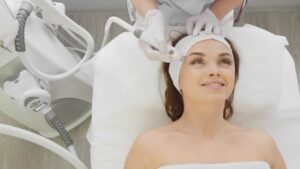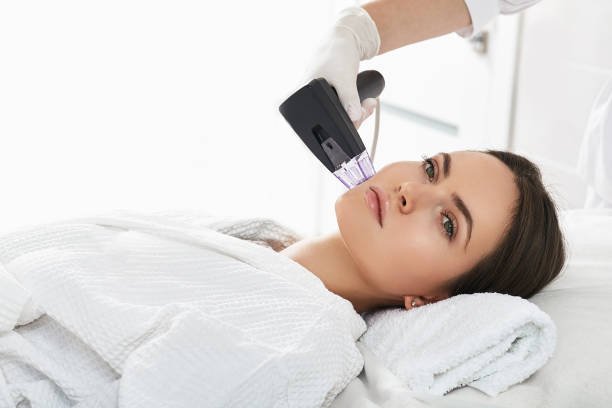Radiofrequency Treatments in Abu Dhabi have gained popularity for their ability to enhance skin appearance, tighten skin, and promote collagen production. If you are considering this non-invasive procedure, it’s essential to know what to expect before, during, and after the treatment. This comprehensive guide will provide you with an overview of radiofrequency treatments, the process, and the potential outcomes.
1. Understanding Radiofrequency Treatments
Radiofrequency treatments utilize energy waves to heat the skin’s deeper layers, stimulating collagen and elastin production. This process helps tighten the skin, reduce wrinkles, and improve overall skin texture. RF treatments can be used on various body areas, including the face, neck, abdomen, and thighs.
2. Consultation and Assessment
Before undergoing RF treatment, you will typically have a consultation with a qualified practitioner. During this appointment, the practitioner will assess your skin type, discuss your goals, and determine if RF treatment is suitable for you. It’s also an opportunity to address any concerns or questions you may have.

3. Preparing for the Treatment
Preparation for radiofrequency treatment is generally minimal. You may be advised to:
- Avoid Sun Exposure: Protect your skin from sun damage leading up to the treatment.
- Refrain from Certain Medications: Inform your practitioner about any medications or supplements you are taking, as some may need to be paused.
- Hydrate Well: Drink plenty of water before your treatment to keep your skin hydrated.
4. What Happens During the Treatment?
On the day of the procedure, here’s what you can expect:
a. Arrival at the Clinic
Arrive at the clinic or treatment center at your scheduled appointment time. The procedure usually takes about 30 minutes to an hour, depending on the treatment area.
b. Skin Preparation
The practitioner will cleanse your skin to remove any makeup or impurities. In some cases, a topical anesthetic may be applied to enhance comfort during the procedure.
c. Application of the RF Device
The practitioner will use a handheld RF device that emits radiofrequency energy. As the device is moved across the treatment area, you may feel a warming sensation, similar to a hot stone massage. Most patients find the experience comfortable, with minimal discomfort.
d. Monitoring Throughout the Procedure
The practitioner will monitor your skin’s temperature throughout the treatment to ensure it remains within a safe range. You can communicate any discomfort or concerns during the procedure.
5. Post-Treatment Care
After your RF treatment, you can expect the following:
a. Immediate Effects
You may experience some redness and swelling in the treated area, similar to a mild sunburn. This typically resolves within a few hours to a couple of days.
b. Avoiding Sun Exposure
It is crucial to protect your skin from sun exposure for a few days post-treatment. Use a broad-spectrum sunscreen to minimize the risk of pigmentation changes.
c. Hydration and Skin Care
Keep your skin hydrated and follow any aftercare instructions provided by your practitioner. Avoid harsh skincare products or exfoliants for a few days.
6. Expected Results
Results from radiofrequency treatments may not be immediately visible. Instead, the full effects typically develop over several weeks as collagen production increases. You can expect smoother, tighter skin with a reduction in fine lines and wrinkles.
7. Treatment Frequency
To achieve optimal results, multiple sessions may be recommended, usually spaced a few weeks apart. Your practitioner will create a personalized treatment plan based on your goals and skin condition.
8. Possible Side Effects
While radiofrequency treatments are generally safe, some patients may experience:
- Redness
- Swelling
- Mild discomfort
- Temporary skin sensitivity
These side effects usually resolve within a short time. Serious complications are rare but can include burns or scarring if the treatment is not performed correctly.
9. Who Should Consider Radiofrequency Treatments?
RF treatments are suitable for individuals looking to improve skin laxity, reduce wrinkles, and enhance overall skin texture. It is essential to consult with a qualified practitioner to determine if you are a good candidate based on your skin type and treatment goals.
10. Conclusion
Radiofrequency treatments offer a non-invasive solution for those seeking to improve their skin’s appearance. By understanding what to expect during the process, you can feel more confident and prepared for your treatment journey. Always consult with a qualified professional to ensure that radiofrequency treatments align with your skincare goals and needs.
FAQs
- How long does a radiofrequency treatment session last? A typical session lasts between 30 minutes to an hour, depending on the treatment area.
- Is radiofrequency treatment painful? Most patients report only mild discomfort, comparable to a warm massage, and topical anesthetics can be used to enhance comfort.
- How many sessions are needed for optimal results? Many patients require 3 to 6 sessions, spaced a few weeks apart, for the best outcomes.
- Are there any side effects associated with radiofrequency treatments? Common side effects include redness, swelling, and mild discomfort, which usually subside quickly.
- Can I wear makeup after the treatment? It’s best to wait at least 24 hours before applying makeup to allow your skin to recover.
- How long do the results last? Results can last several months, and ongoing maintenance treatments can help prolong effects.
- Who is a good candidate for radiofrequency treatments? Individuals looking to tighten skin, reduce wrinkles, and improve skin texture are typically good candidates, but a consultation is essential for personalized advice.



